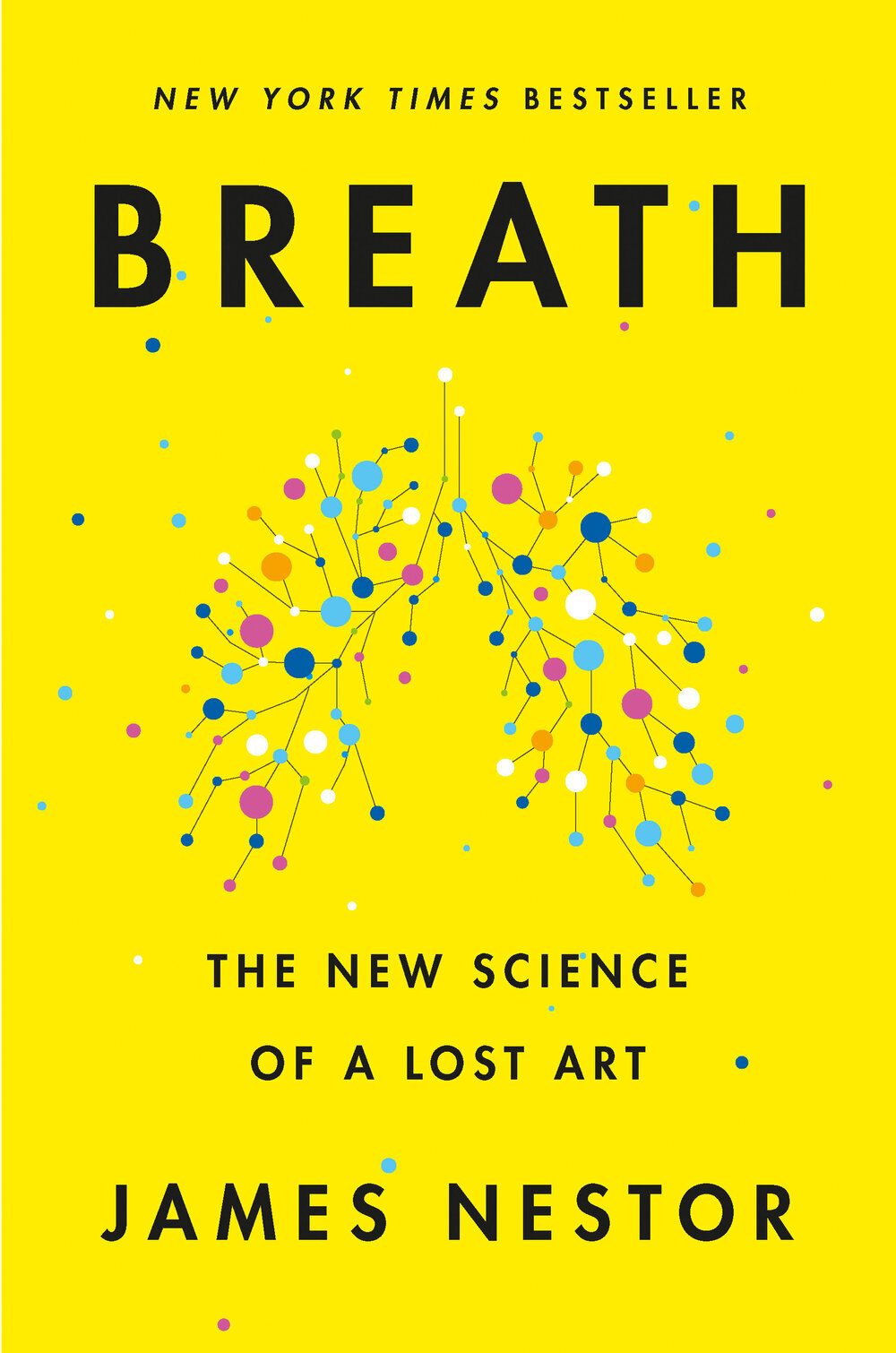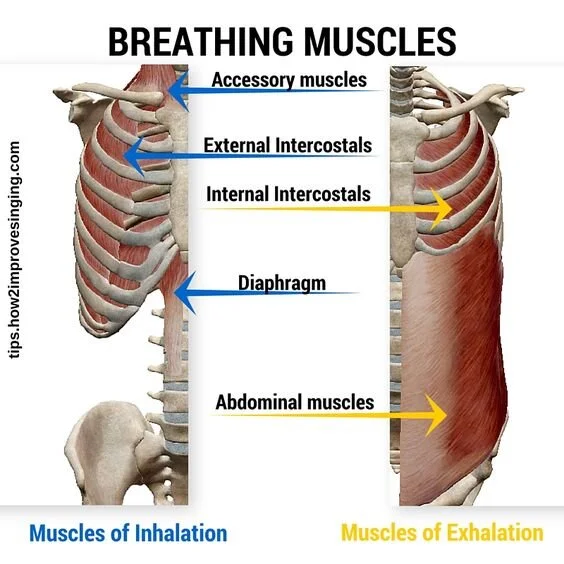Hidden Symptoms Part 2: Breath
What if your core work was as simple as Inhale-Exhale?
In a 2004 study, researchers asked the question: Does the diaphragm play a role in postural stability? This wasn’t a new thought- Scratch the surface on nearly any mind-body, martial art, or strength training practice and you will find a lengthy discussion about the manipulation of breath for enhanced performance. But, in 2004, researchers stuck some needles in the diaphragm to actually capture the electrical activity that describes muscular response. Turns out, centuries of trainers were correct- we rely on our diaphragm to increase internal stability. In the case of the 2004 study, they found that movements of the shoulder and elbow were anticipated by the diaphragm. This means that in the milliseconds before subjects lifted their arm up, the diaphragm and deep abdominal muscles contracted proportionately. That study is just one example- there are entire bodies of research dedicated to the act of respiration.
The difference is that now the science and the art of diaphragmatic breathing are going mainstream…It’s about time.
We don’t “fill” our bellies with Air.
I’ve used it in coaching, too.
“As you inhale, feel the air pull into the bottom of your stomach. As you exhale, blow out from your tummy first.”
For those of you who don’t like anatomy, just read the next short paragraph then skip to the next section. For the rest of you nerds, enjoy.
Your diaphragm contracts to make air move. Your abdomen is full of guts that are smooshed with every diaphragm contraction, hence a “bulging” sensation on each inhale. That’s not air in your gut. It’s literally your guts moving around. (ok, you can skip the rest.)
Nerds, this next part is for you. Breathing works in part because of Boyle’s law- at a constant temperature, pressure and volume are inversely related. If one goes up, the other goes down. During inhalation, the rib cage expands, pulling the lungs into a bigger shape. The pressure inside the lungs drops below external air pressure. Nature, wanting all things equal, rushes air into the lungs to fix the imbalance. Once our body has made use of the air inside the lungs, the ribcage presses closed, driving internal pressure up. Nature does its job and pushes the air out of the body.
All this to say that “respiration”- the act of exchanging gas- is a passive process. It just happens because we change the shape of our ribcage.
Inhalation and exhalation are active- usually involuntary, but you and I both know that we can make voluntary decisions about breathing. It’s why you’ve made it this far into this article. Our job is to make the thoracic cage bigger and smaller. The primary muscles that do this are the intercostals and the diaphragm. For “quiet breathing” that’s all you need. Anything more than that, “forced breathing”, and we bring in the helpers. If it’s attached to the rib cage it jumps in. Pull in a big breath and feel your neck muscles contract to lift the rib cage up, exhale hard and your stomach muscles tense.
This next bit is SWEET, tune back in.
This is the coolest video- appreciate it for a moment. Everything about muscles and gas exchange and Boyle’s Law is blah, blah, blah.
This video shows what you need to know.
The Diaphragm and the intercostals contract. Space in the lungs opens up.
But We are not empty vessels.
Just as the diaphragm opens one cavity, it compresses another.
So watch the video on the right. Then look at the anatomy diagram below.
I added the yellow lines to highlight the orientation of the diaphragm. The solid yellow line is the relaxed diaphragm, collapsing up into the thoracic space. As the diaphragm contracts, it shortens, flattening downwards.
WHAT IS BELOW THE DIAPHRAGM?
Guts, lymphatics, muscles, arteries, veins. All the things! All of these systems evolved knowing that they should experience the pressure of the diaphragm 12-16 times a minute. We might be able to assume that these systems have adapted their function based on the ebb and flow of breathing.
SO WHAT?
I promise that this is where we get to the hidden symptoms. You’ve made it this far, the least I can do is get to the point.
The diaphragm does more than breathing. It is the conductor of our body’s Symphony, directing the tempo of activation and relaxation.
Breathing is the mechanism by which we balance our body’s chemistry and leverage some control on our nervous system. How do you tell yourself to calm down? “Take a breath.” Why does this work? The diaphragm rubs along the vagus nerve- the central nerve to our Parasympathetic Nervous system. The PNS is the “slow down, you’re safe” system. The vagus nerve tells our heart rate to slow down, digestion to increase, and muscles to relax. If you find yourself living in a constant high state of stress, re-examine your breathing. Chances are you live with shallow, fast breaths that are preventing you from entering a calmer state.
Movement of the Diaphragm stimulates motion in the gut.
All those organs in your abdomen appreciate a little massage here and there. Breathing creates a continuous ebb and flow of pressure that promotes blood flow, lymphatic drainage, and potentially digestive health. Exercise has been a sure-fire remedy for constipation for centuries. Ever wonder why? A regular practice of deep breathing just may help with regularity in other places.
Breathing is your core. Breathwork IS Corework.
The act of diaphragm movement sets off a cascade of events, not only for gaseous exchange, but also for activation of pelvic floor and deep core stabilizers. Whenever you have pain that is somehow been linked to a “Weak Core” or a “Tight neck” look to your breath first. Chances are you use too much accessory muscles and not enough diaphragm.
What to do?
Here’s the step by step. Or just watch the video below…
Lie on your back, knees bent, feet flat on the floor.
Place one hand on your chest, the other on your belly.
Draw in a BIG inhale.
Did the Belly hand move?
Exhale as far as you possibly can, until you feel your belly button draw towards your spine.
Now take a normal breath to reset.
Try again, this time, attempt to make the Belly hand move before (and more) than the Chest hand. Again, on the exhale, feel the belly button draw towards your spine.
Keep practicing. Check out the video for more tips. If you’re really feeling stuck, schedule an appointment for all the good stuff!




